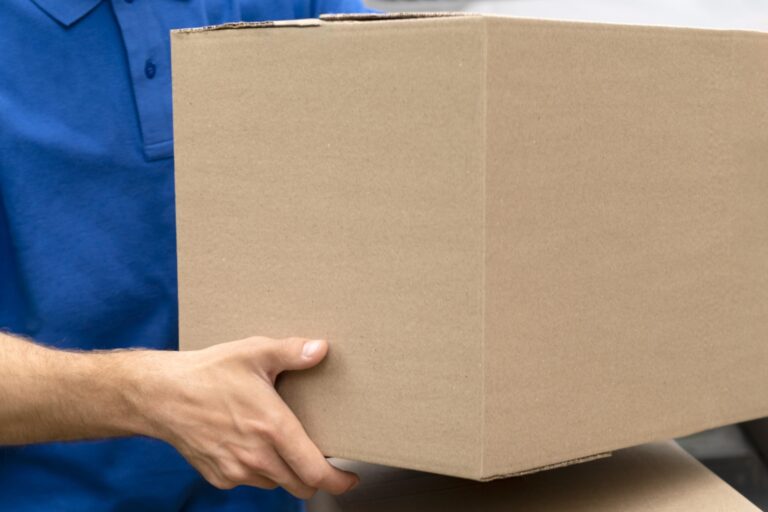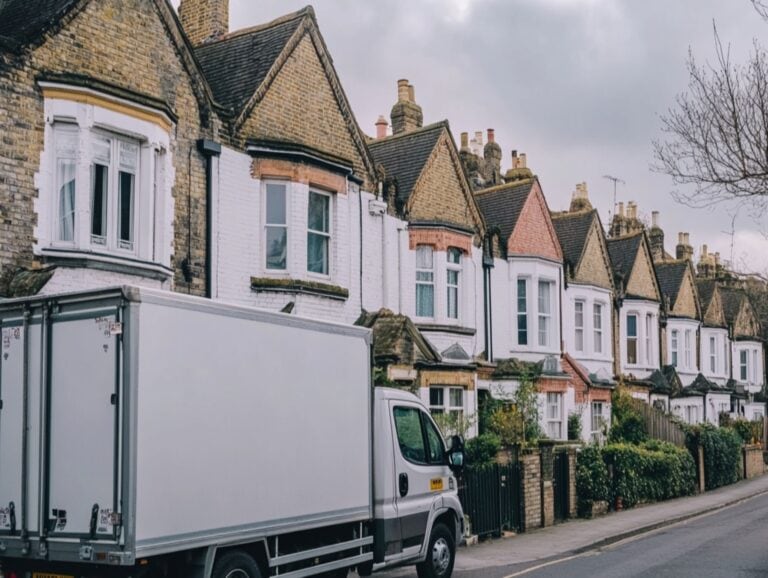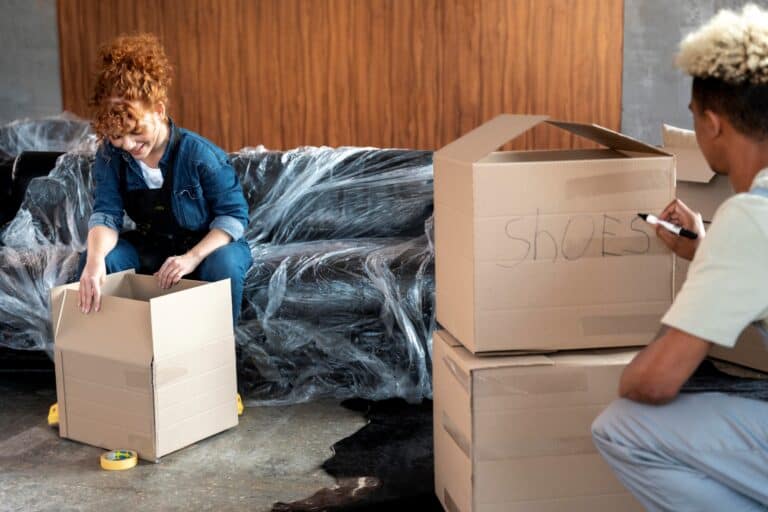Wondering how to pack fragile items to ensure they don’t break during a move? This guide covers everything you need to know. Learn the best materials and techniques for keeping glassware, electronics, and other delicate items safe. From bubble wrap to packing paper and sturdy boxes, discover the step-by-step methods to protect your valuables. Whether it’s your grandmother’s china or your latest tech gadgets, we’ve got you covered with expert tips and tricks.
Key Takeaways
- Gather essential packing supplies like bubble wrap, packing paper, and sturdy cardboard boxes to ensure the safety of fragile items during a move.
- Prepare and wrap fragile items individually using materials such as bubble wrap and packing paper, and use smaller boxes to prevent shifting and reduce breakage.
- Label boxes with ‘fragile’ and utilise cardboard dividers for glassware, ensuring proper orientation and careful handling during transit to protect delicate items.
Gather Essential Packing Supplies
Before embarking on the packing task, ensure all necessary packing supplies are at your disposal. The effectiveness of your packing will greatly depend on the quality of the materials you use, especially when it comes to safeguarding fragile items during transportation within Uxbridge.
Bubble wrap is one of the best packing materials for fragile items. Its cushioning properties protect items from shocks and impacts during the move, making it indispensable for wrapping delicate belongings like glassware and ceramics. Packing paper is another must-have. It’s cost-effective, recyclable, and perfect for wrapping glassware and filling empty spaces in boxes to prevent movement. For added protection, consider using packing paper first, then bubble wrap to ensure your fragile items are well-secured.
Sturdy cardboard boxes provide the durability and stability needed for heavy and fragile items. Choosing a variety of box sizes over uniform ones can enhance space management and ensure a more secure fit in the moving truck. Double-walled cardboard boxes are particularly recommended for packing heavy fragile items, as they can bear weight without breaking.
Don’t forget to:
- Use fragile packing tape to mark your boxes and ensure they are handled with care
- Use bubble wrap or alternatives like old towels or crumpled newspaper to wrap your items
- Prep your packing materials before you begin to make the process smoother and more efficient.
Preparing Fragile Items for Packing
With all your supplies ready, you can begin the preparation of your fragile items for packing. An advanced organisation can save you from costly damage to your delicate possessions.
Begin by identifying all the fragile items for packing. This step aids in the strategic planning of the packing process and guarantees adequate supply of packing materials. When packing fragile items, breakable items should be packed in their own individual box or container to minimise the risk of damage.
Choose the best packaging materials for each item. When packing delicate items, it’s important to use:
- Bubble wrap
- Tissue paper
- Packing paper
- Towels
- Blankets
These materials, also known as packing materials, will help ensure that delicate items are protected during transportation and prevent any damage. For delicate textiles and antique clothing, use acid-free tissue paper to prevent acid migration and protect the fabric. Careful planning and lots of protective materials are the best advice for packing delicate items safely.
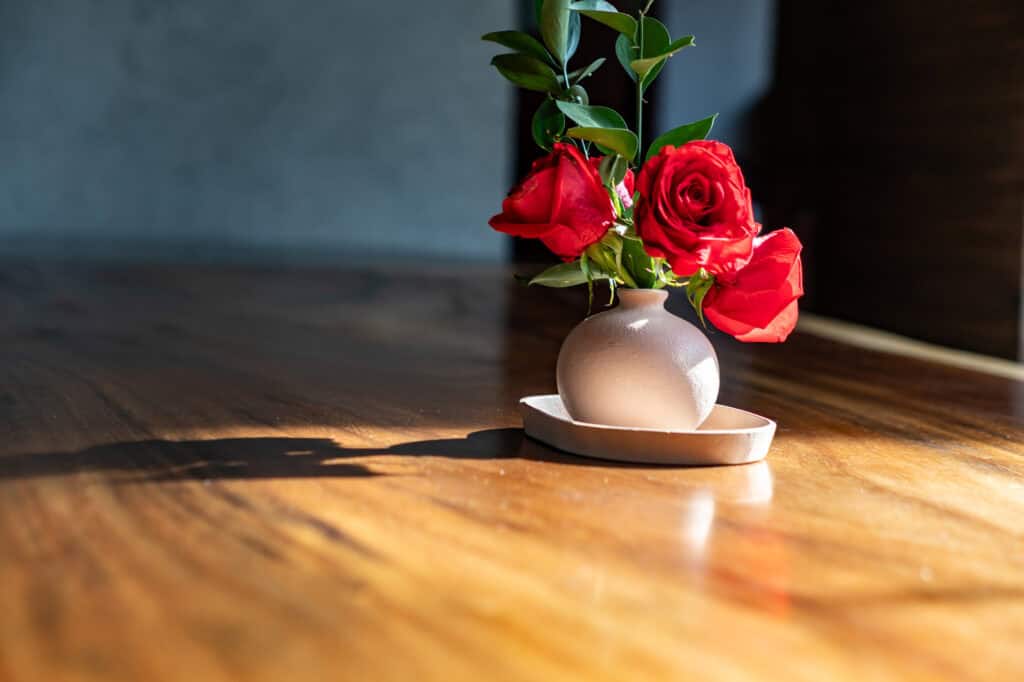
How to Pack Glassware and Ceramics
Packing glassware and ceramics requires special attention due to their delicate nature. Using smaller boxes for these items helps prevent them from shifting around during the move.
Start by wrapping each cup and glass individually in packing paper before placing them in a box. When it comes to plates and bowls, stack them together with a solid piece of cardboard at the bottom of the box. Separate each item with packing paper or bubble wrap and seal the stack with packing tape. Always pack plates vertically to reduce the risk of breakage.
For stemware, extra padding around the stems is necessary to avoid breakage. Initiate by encasing the stems in bubble wrap. Then, cover the entire glass in paper before using additional bubble wrap for added protection. Secure wine glass stems in this way to avoid any mishaps during transit.
Finally, pack the heaviest items at the bottom of the box to provide a stable base and prevent smaller items from getting crushed. Using plenty of packing paper and bubble wrap ensures that your glassware and ceramics remain intact throughout the move.
Securing Electronics for Moving
Among the most valuable and fragile items to pack are electronics. Your initial move should be backing up all your digital data to avoid losses during the relocation.
If you still have the original boxes for your electronics, use them. These boxes are specifically designed to protect your devices. For TVs and monitors, wrap them in bubble wrap and then secure them with a blanket or towel. Fasten a thick blanket around the TV screen and the base using a small rope or bungee cord for extra protection.
Fasten a thick blanket around the TV screen and the base using a small rope or bungee cord …
Remove all cables and attachments from your electronics, wrap them in bubble wrap, and place them in a labelled bag or box. This prevents cables from getting tangled or lost and makes reassembly easier at your new location.
Packing Delicate or Antique Furniture
Packing delicate or antique furniture calls for extra caution. Begin the process by disassembling large, bulky furniture to simplify packing and transportation.
Clean all components before wrapping them. Here are some tips for wrapping different types of items:
- Delicate or antique items: Wrap them in bubble wrap to absorb shocks and vibrations.
- Glass or wood items: Use stretch wrap to cover them, ensuring coverage around corners and edges.
- Valuable antiques: Consider using a protective shell or wooden crate to offer the highest level of protection against impacts.
If you’re unsure about packing irreplaceable antiques, consider seeking professional assistance to ensure proper handling. Professional movers have the expertise to handle delicate furniture safely and securely.
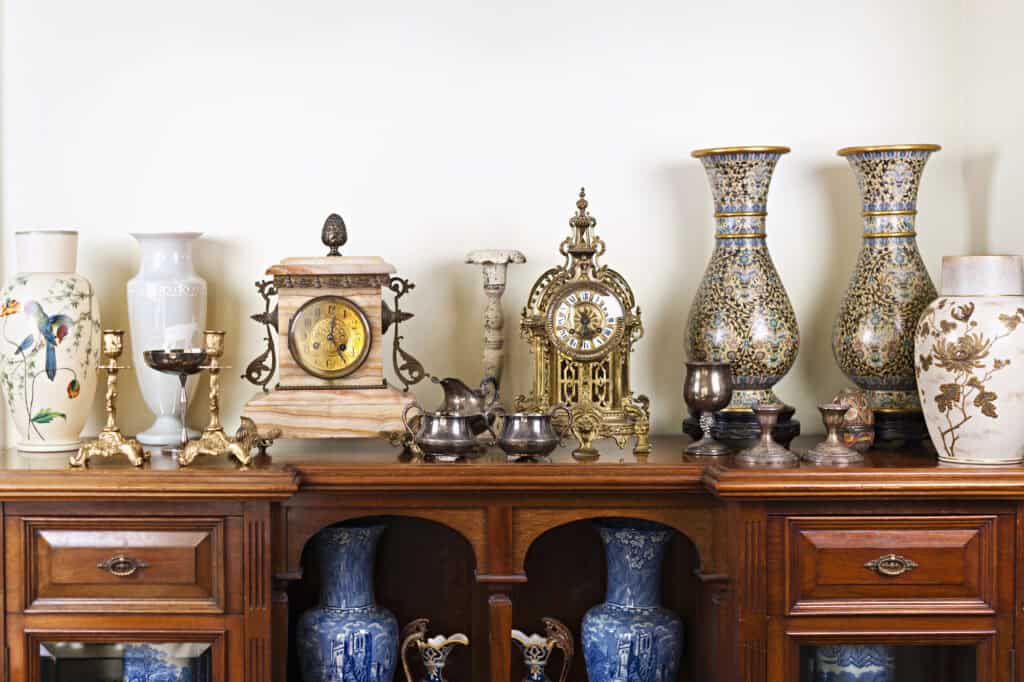
Protecting Artwork and Mirrors
Artwork and mirrors can be especially susceptible to damage during a move. Here are some tips for protecting them:
- Remove them from the wall with care and place them on a flat surface.
- For valuable paintings, consider appraising the artwork to gauge its value and ensure adequate insurance coverage.
- If the artwork or mirror has a glass front, create an X out of masking tape to prevent shattering.
- Use cardboard corners to protect the corners of frames, mirrors, and artwork from damage.
To pack fragile items for moving, follow these steps:
- Cover the glass with a piece of cardboard cut to shape.
- Wrap the item in bubble wrap.
- Use picture cartons or dedicated crates for added security during transportation.
- Seal the box with packing tape to ensure it stays closed during the move.
Filling Hollow Items and Empty Spaces
To avoid movement and potential damage during transit, it’s important to fill hollow items and empty spaces. Hollow items like jars and vases should be tightly packed with paper or bubble wrap to prevent cracks and ensure they are cushioned.
Ensure all empty spaces within boxes are filled with packing materials to prevent movement. Packing peanuts, towels, or paper can be used to fill leftover extra space in boxes, while soft items like shirts and towels help absorb shock.
When packing dishes and glasses, cushion fragile items with packing materials and line the top and bottom of the box with about six inches of crumpled paper to increase shock absorption.
Labelling Boxes with Fragile Items
Boxes that contain fragile items should be labelled properly to ensure they receive proper care during the move. Clearly marking boxes with ‘fragile’ helps prevent careless handling and reduces the risk of boxes being dropped or mishandled.
When labelling boxes, indicate the correct orientation and include notes on the contents if necessary. This ensures that Uxbridge movers know how to carry and place the boxes properly, keeping your fragile items safe.
Using Cardboard Dividers for Glassware
Protection of glassware during transit can be achieved effectively by using cardboard dividers or special boxes to separate them. These dividers can be crafted to protect each glass adequately.
Cardboard dividers are typically used in combination with foam pouches to provide extra protection for glasses. A double-walled box is recommended to house the dividers and glassware for added durability.
This method ensures that each glass is securely held in place, reducing the risk of breakage during the move. It’s a simple yet effective way to keep your glassware safe.
Transporting Fragile Items Safely
Transporting fragile items safely demands meticulous planning and execution. While loading items onto the moving truck, ensure heavy items are at the bottom and the lighter or fragile ones are on top to prevent any crushing.
Transportation methods depend on the size and fragility of the items. Large or very fragile items may require professional moving services or a self-storage facility. Consider transporting very fragile items yourself in your own vehicle to ensure they receive the utmost care.
RECOMMENDATION
Avoid routes with ramps and minimise shaking or dropping boxes during transport to ensure the safety of fragile items. By following these tips, you can transport your fragile items safely to their new location.
Summary
Packing fragile items for moving requires careful planning, the right materials, and proper techniques. By gathering essential packing supplies, preparing your items, and following specific packing tips for different types of fragile belongings, you can ensure they arrive safely at your new home. Remember, the key to a successful move is preparation and attention to detail. Happy moving!
Frequently Asked Questions
What are the most important packing supplies for fragile items?
The most important packing supplies for fragile items are bubble wrap, packing paper, sturdy cardboard boxes, and fragile packing tape. These materials help protect delicate items from shocks and impacts during transit.
How should I pack glassware to prevent breakage?
To prevent breakage when packing glassware, wrap each piece individually in packing paper, use small boxes to minimise movement, and stack plates vertically with packing paper or bubble wrap between items. When packing wine glasses, secure the stems with bubble wrap first, then wrap the entire glass in paper and additional bubble wrap.
What steps should I take to secure electronics for moving?
To secure electronics for moving, back up digital data, use original boxes if available, wrap TVs and monitors in bubble wrap, and secure them with a blanket or towel. Remove and label all cables and attachments.
How can I protect my artwork and mirrors during a move?
To protect your artwork and mirrors during a move, use masking tape to create an X on glass fronts, protect corners with cardboard, cover the glass with a cut-to-shape piece of cardboard, and wrap the item in bubble wrap. Consider using picture cartons or dedicated crates for added security.
What is the best way to transport very fragile items?
The best way to transport very fragile items is to consider transporting them yourself in your own vehicle or using professional moving services while avoiding routes with ramps and minimising shaking or dropping boxes during transport to ensure their safety. Transporting fragile items requires careful consideration to prevent damage.


